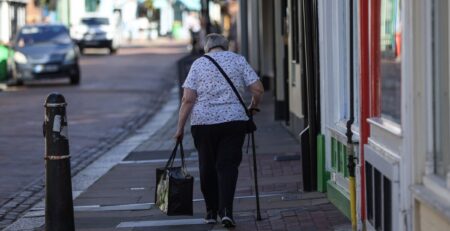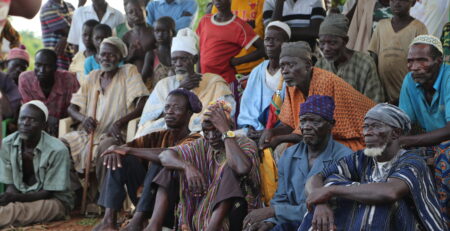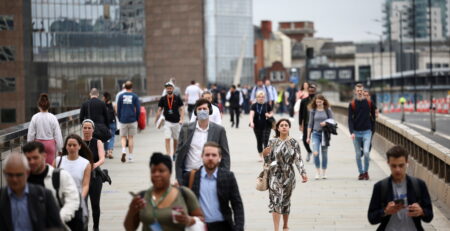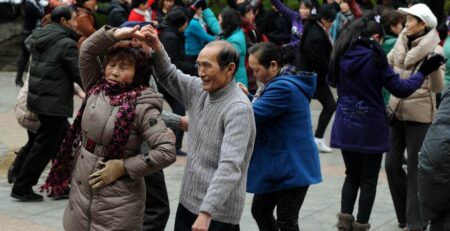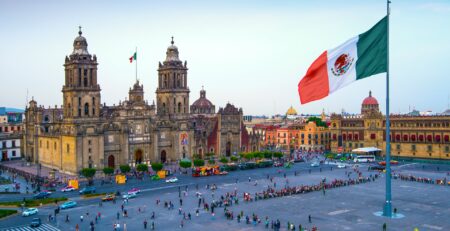US. We Need a New Social Contract for the Coronavirus
Our collective behavior will be the primary determinant of whether we can keep this virus in check.
A team of infectious disease epidemiologists has calculated that we must reduce our social contacts by 65 percent from what they were before the virus started spreading.
Everyone wants to get the country back to work, school, and together again as soon as possible. On Friday, the Trump administration announced it wants to do that in phases and allow each governor to make the decision when and how to reopen. Even then, the virus will continue to lurk in people who are unaware they are carrying and spreading it to others who will become ill with Covid-19.
We need to face this fact: Returning to our old reality will be a slow and frustrating process that will take many months and require deep wells of patience. We will not be fully free until we have a vaccine. So how will we navigate this perilous terrain?
A team of infectious disease epidemiologists led by Dr. Gerardo Chowell of Georgia State University has calculated that we must reduce our social contacts by 65 percent from what they were before the virus started spreading. By doing this, they believe, we will reach the point at which each existing infection causes less than one new infection. This is what epidemiologists call R (for reproduction) below one. Only then will the number of infections begin to fall, and we can get the epidemic under control.
Achieving this degree of social protection will require a new clause in our social contract that will mean fewer contacts with others and wearing protective gear. Just as we obey the most basic laws in order to protect all of us, everyone needs to accept responsibility for not only our circle of friends, family and colleagues, but for the wider community. Our collective behavior will be the primary determinant of whether we can keep this virus in check. We each hold the health of our neighbors in our hands.
In broad strokes, here’s what we should do. We should reduce our usual contacts by two-thirds, if our jobs permit. This reduction will help sustain what we have accomplished by staying at home. Some of us can reduce our contacts further if we can continue to be able to work at home. Those who are at higher risk may need to reduce their contacts even more to stay safe.
When we go out, we should wear a face mask, distance ourselves, and if we are touching surfaces on public transportation and stores, we need to consider wearing gloves and wash our hands frequently. People whose jobs require them to be in contact with others, like cashiers and Transportation Security Administration employees, will need plastic barriers, masks and gloves. Any worker with fever or respiratory symptoms must refrain from going to work.
We can’t cram people into buses, trains, subways and airplanes like we once did, and those loads must be cut without creating long lines of people waiting to board. Mass transit agencies and airlines will require subsidies to run more buses, trains and planes with fewer people on board. Strict protocols for cleaning these conveyances must be put in place. Conductors and flight attendants will need proper face masks.
Reopening our world must be done gradually. Businesses need to rethink their workplaces to minimize contacts between people. Telecommuting should continue for those who can do their jobs at home. This will allow others who can’t work from home to work in a less crowded environment. At workplaces, the number of workers on shifts should be reduced and spaced out. Meetings should be held remotely or limited to a handful of people. Common areas where people congregate should be closed. Nonessential business travel should be curtailed. If an increase in infections occurs, we’ll need to scale back.
If we are successful at keeping the number of new infections low, we can consider expanding our new normal. Restaurants can reopen if they take steps to provide adequate social distancing for workers and customers. If we aren’t seeing new cases, theaters, sports venues and concerts can resume, provided patrons wear face masks and are spaced out.
We all hope we can reopen schools and colleges this fall, but only if the number of new infections is extremely low and controlled. But the rules of limited engagement will still apply. Students must reduce their contacts by staying in the same small group, limiting interaction outside that group, and wearing face masks in close quarters. That’s critical.
Before we can even consider entering this new world, a new testing strategy must be put into place. Priority needs to be given to areas where we think the virus is most likely circulating, based on surveillance testing. We need millions of tests a day, not the hundreds of thousands of tests being done now. This is achievable, but will require commandeering the large laboratory testing facilities in the country and invoking the Defense Protection Act to assure swabs, reagents, testing equipment and other supplies are at the ready.
Many seniors and vulnerable individuals are wondering when they can go out again. A mass testing program will go a long way to ensure their safety by identifying and isolating individuals in their communities who are transmitting the virus. Even then they need to wear masks, reduce contacts and prioritize when they go out. We also need a public health infrastructure up and running to contact, trace, isolate and prevent infected people from spreading the virus. This will be an enormous undertaking. Hiring and training people to do this contact tracing must begin now.
Likewise, we must muster a wartime effort with the private sector to manufacture enough protective personal gear for all health workers and others who need it, and effective masks for the public. American factories should be using their collective productivity 24/7 to do this.
None of this can be put in place until we see the number of new cases and hospital admissions low enough to give us confidence that we’ve gotten the transmission rate under control and we have the hospital, intensive care and ventilator capacity to handle further outbreaks.
And all this goes away when we have a safe and effective vaccine. Until then, our behavior will control our fate.
Read More @NYTimes



